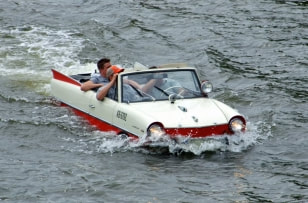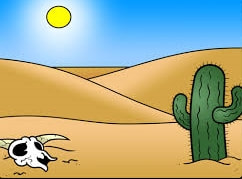
Many intelligent, searching childhood questions will remain forever unanswerable of course. But so do many adult questions and it so happens that I’m wrestling with a big adult-sized question right now.
It’s a question which weighs more heavily on my mind in the winter. In the summer, the pot-holed driveway I share with 12 neighbours is reasonably navigable. Driving on it raises a bit of dust, and some slaloming skills are needed to avoid the deepest holes. However, it can be done without water-wings and a four-wheel drive.
In winter things get a whole lot worse.

Things get very much worse on drive way I share with 12 neighbours: rain excavates the existing potholes in the driveway and gouges out brand new ones. Then it digs channels between the potholes and flings mud at the whole enterprise. Dogs, small children, and adults under four feet tall, need life-jackets when the driveway is in full spate. When I need to pick my way down the drive at night I take a torch as a prophylactic against broken ankles and fractured hips.
Some of us have made efforts to repair the driveway: gravel or idiosyncratic admixtures of shingle, sand and cement have been shovelled into the holes but nothing sticks. The potholes gape mockingly after only a few weeks. What’s most puzzling is that even in the wettest weather, sections of our beleaguered driveway never develop pot-holes. So here’s my big question: what causes potholes and is there a way to fix them?
While on the topic of water I’ve got another question you might be able to answer. I want to know why, and when we began to fear dehydration so much that we began to feel unsafe unless we were eternally clutching a large plastic bottle of water. When I was a kid, if you felt thirsty you got yourself a drink of water. You either filled a glass from the kitchen tap, slurped from the water fountain at school, or guzzled from the garden hose until you weren’t thirsty anymore. Grown-ups didn’t share your tolerance for warm, plastic-flavoured hose-water, but neither did they carry bottled water around with them, except perhaps on picnics. No one thought to measure their water intake. No one, but no one, worried about becoming dehydrated.
Now, it seems, we’re always teetering on the brink of life-threatening desiccation. Ask Google how much water you should drink in a day and you get 112 million responses, which suggests a certain pathological concern about the subject. No one in a New Zealand city is more than a few steps away from potable water and yet people who are merely window-shopping in downtown Nelson carry bottles of water as if their very survival depends on immediate access to a mouthful of H2O.
Excuse me for a moment while you compose your answers to my questions. I’m popping out into the garden to suck on the hose. If I’m to survive the day I need to get 2 litres of water into my body real fast.
 RSS Feed
RSS Feed

